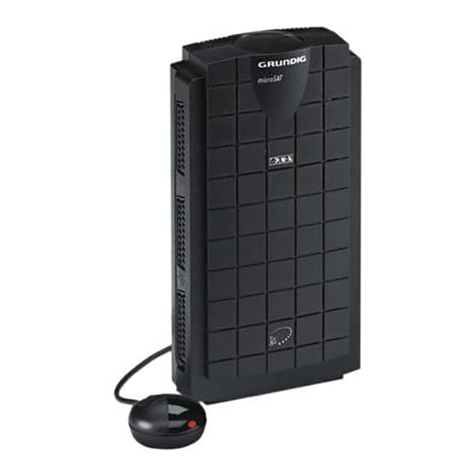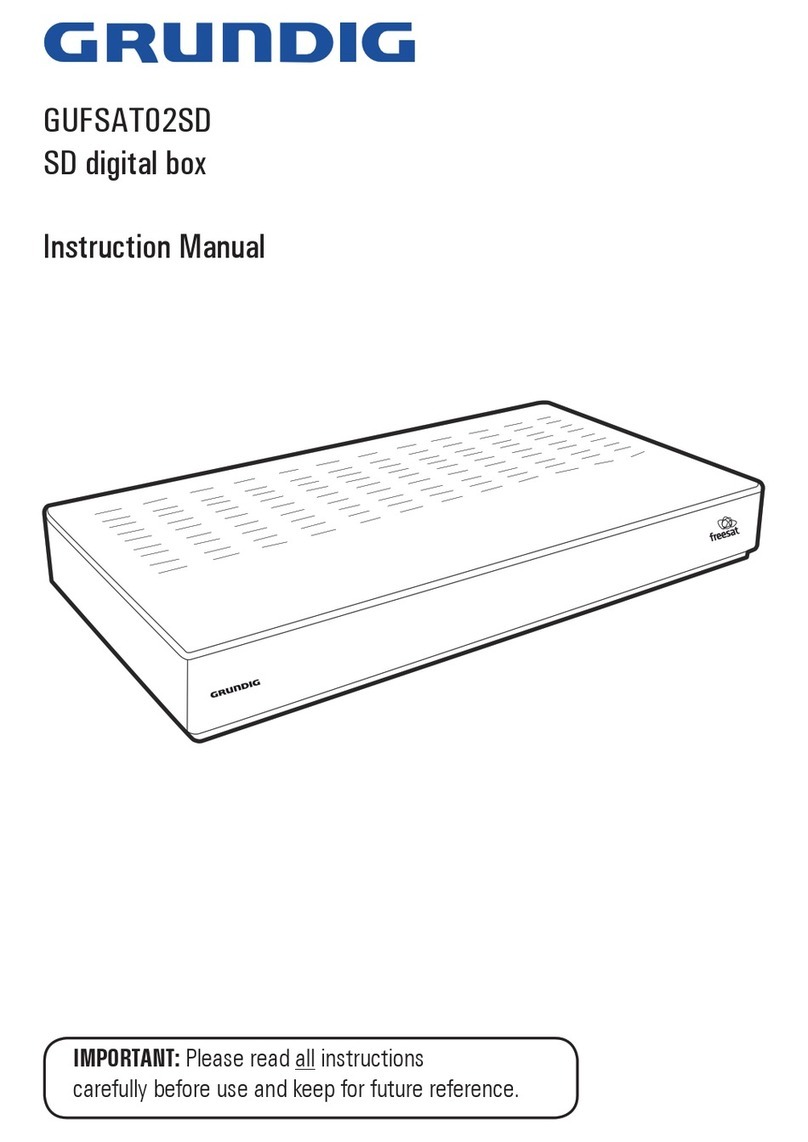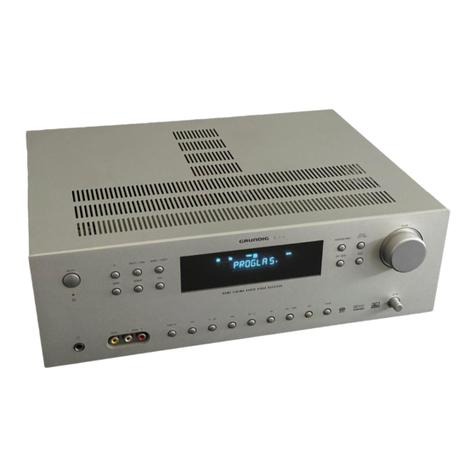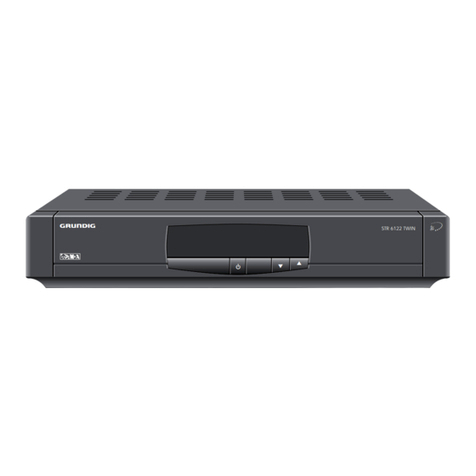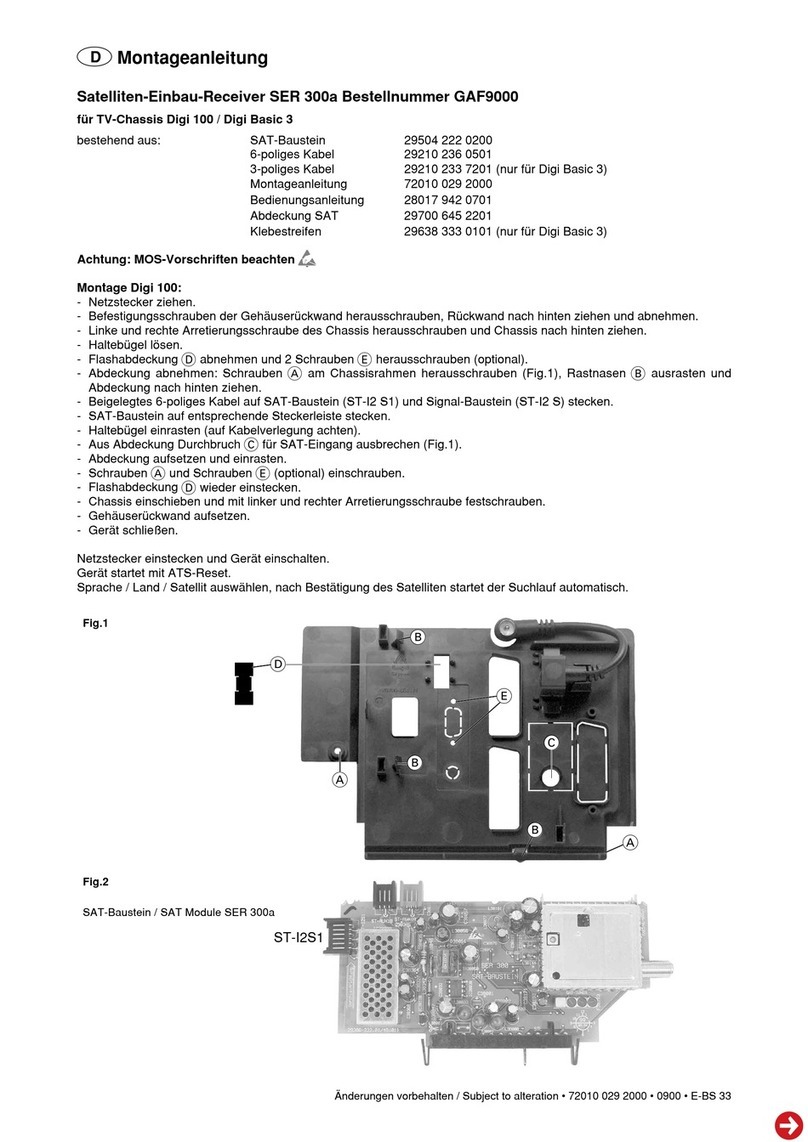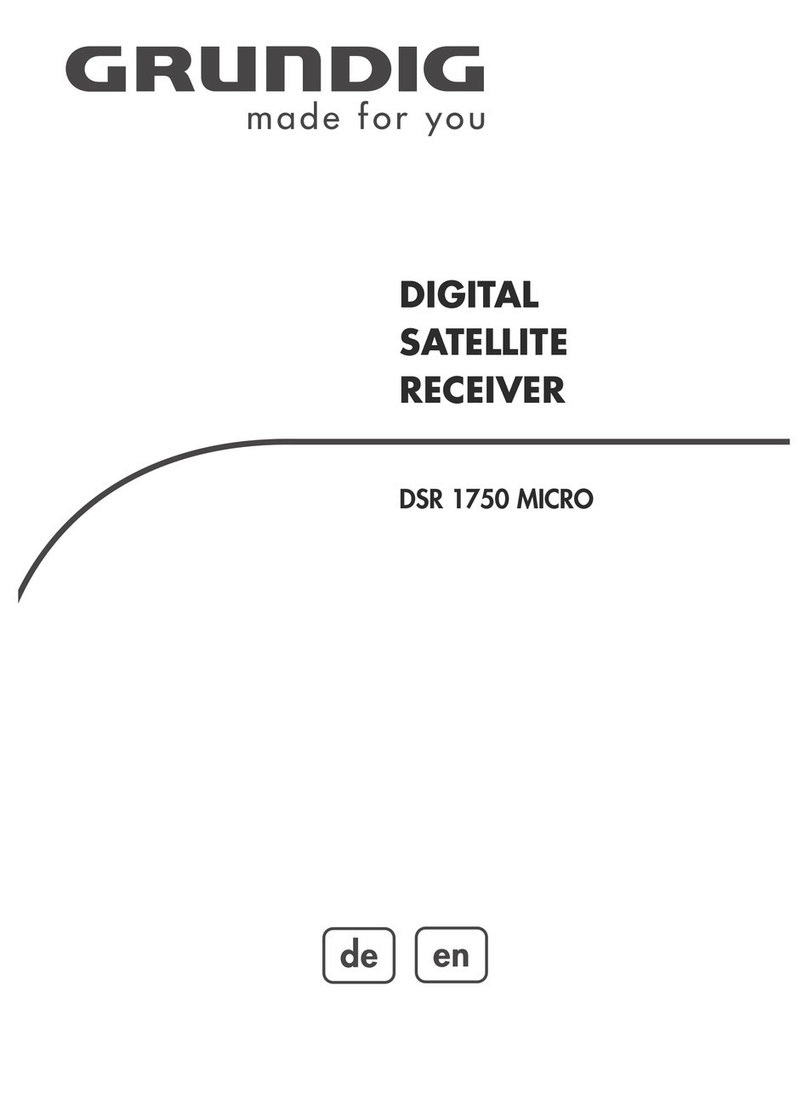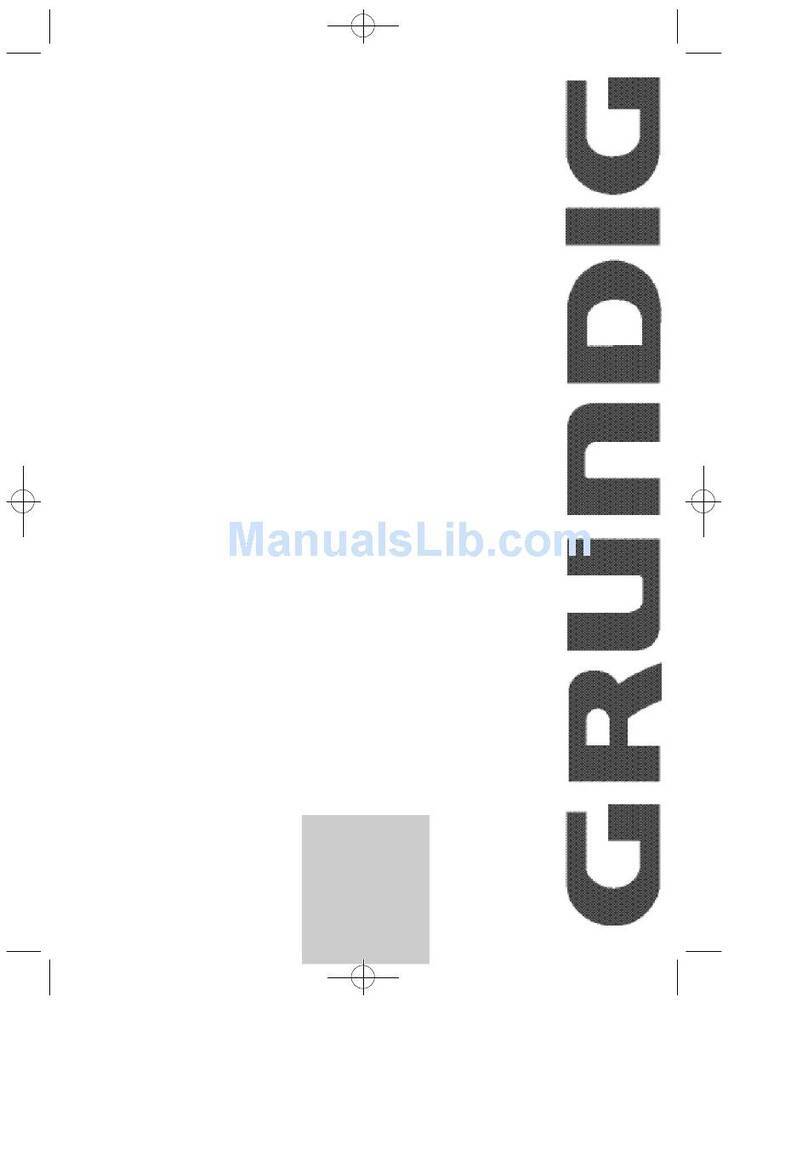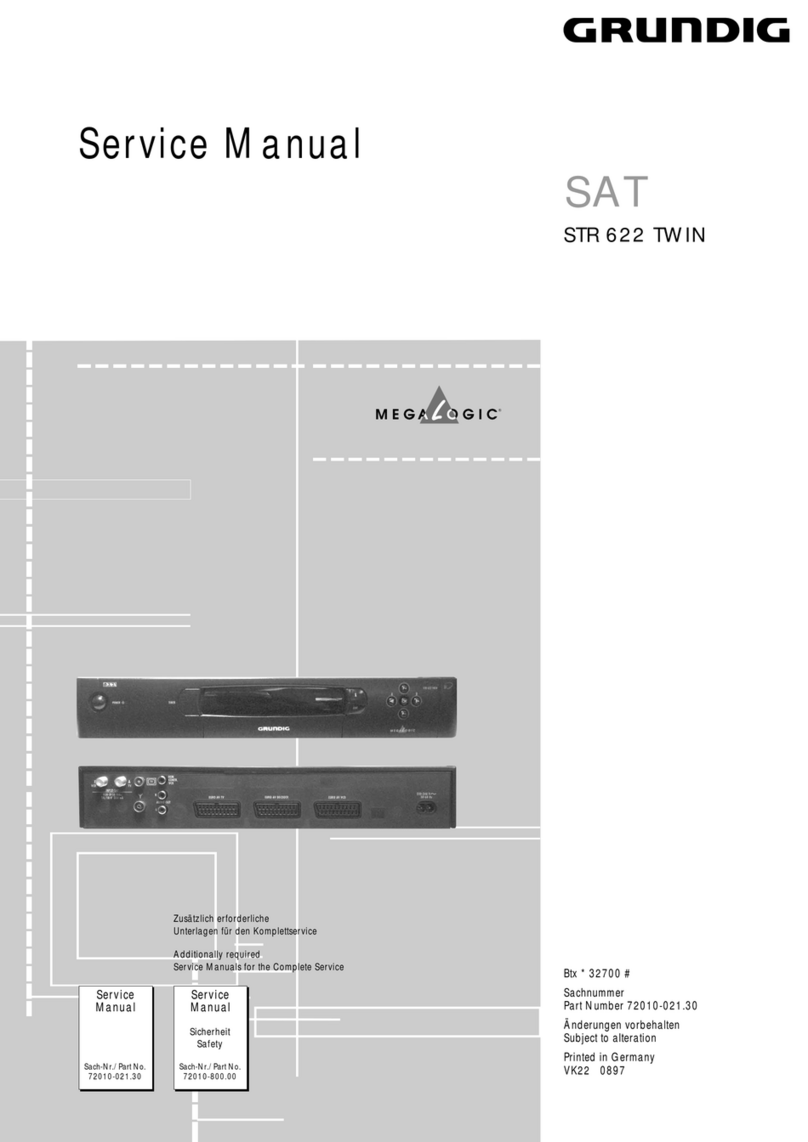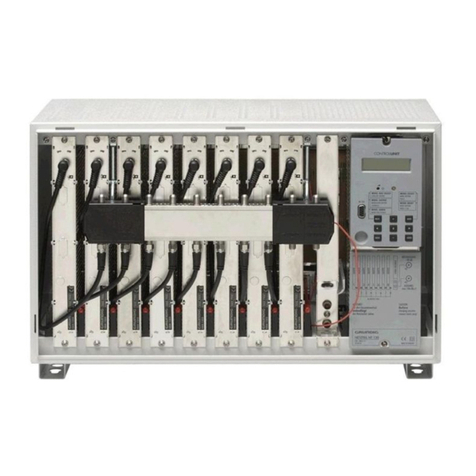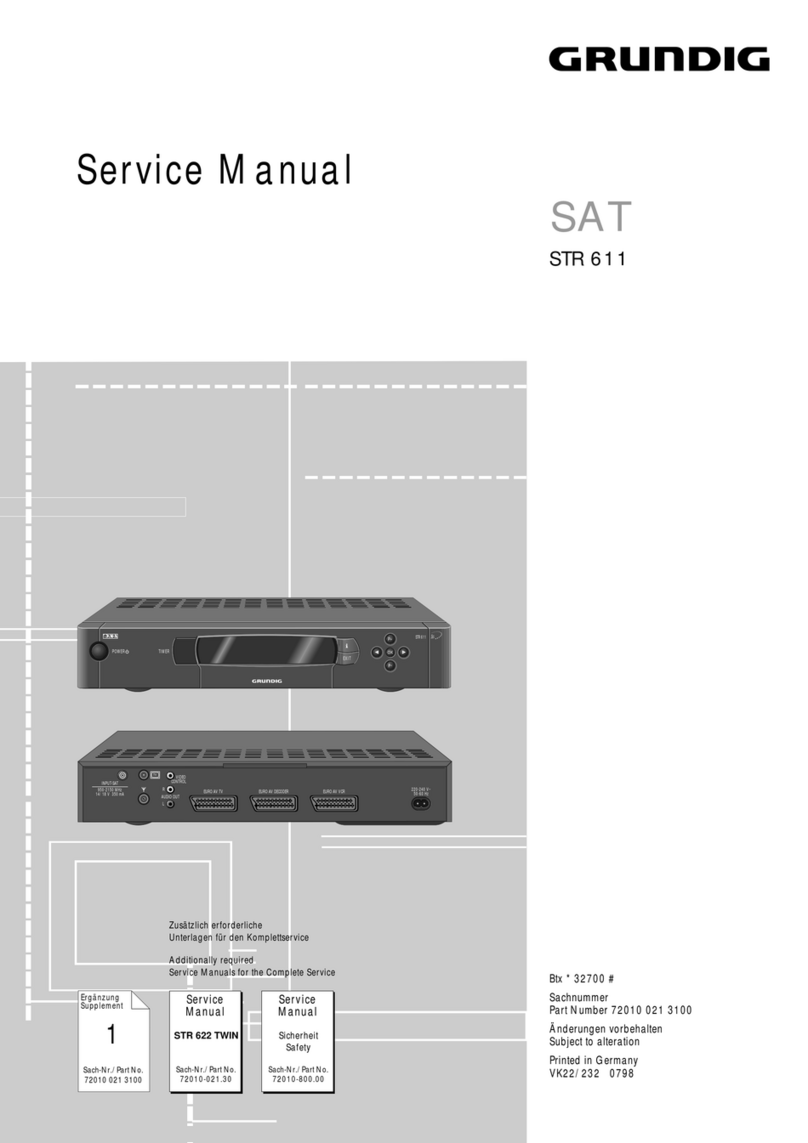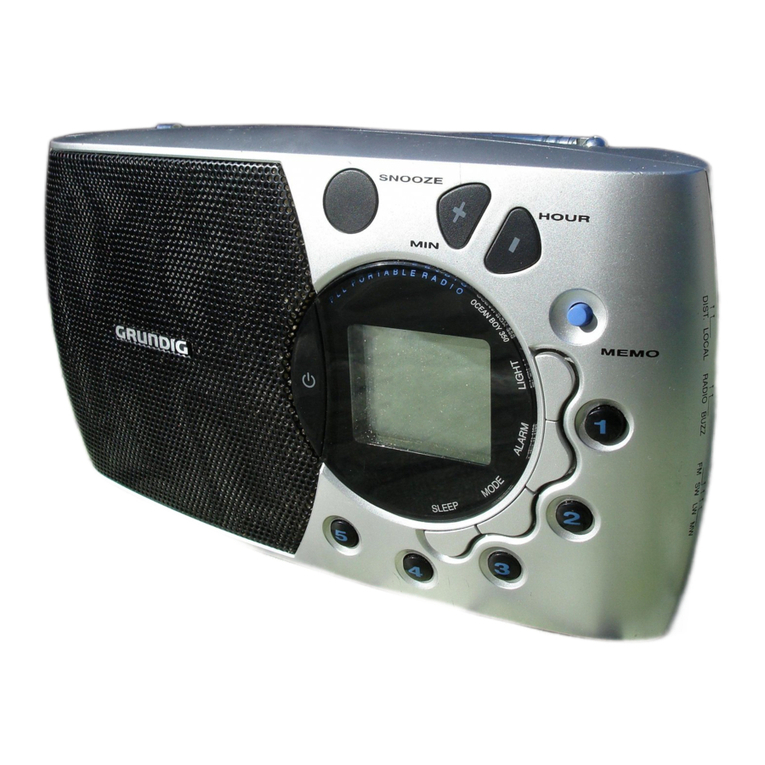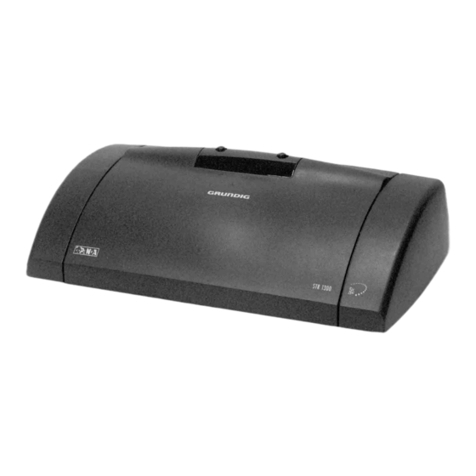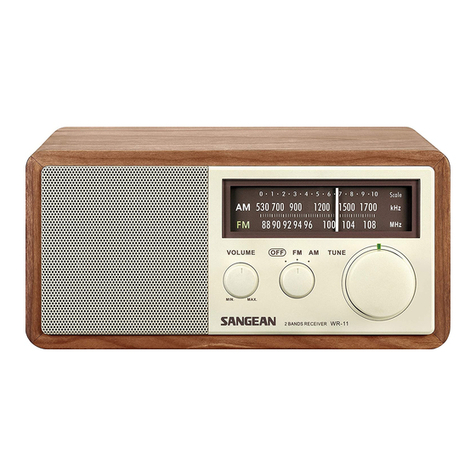
Zur
Beachtung
Ihr
wertvolles
Gerat
darf
sicher
die
gleiche
sorgfaltige
Behandlung
bean-
spruchen,
die
Sie
auch
!hren
Mobein
angedeihen
lassen:
GroBe
Hitze
oder
Feuchtigkeit
vermeiden.
Gehause
nur
mit
weichem,
staubbindendem
Lappen
reini-
gen.
Keine
scharfen
Polier-
oder
Reini-
gungsmitte!
verwenden.
Die
Deutsche
Bundespost
macht
darauf
aufmerksam,
daB
die
,Allgemeine
Ton-
und
Fernseh-Rundfunkgenehmigung”
nur
zum
Errichten
und
Betreiben
von
Ton-
bzw.
Fernseh-Rundfunkempfangern
berechtigt.
Es
durfen
damit
nur
Sendungen
des
Rund-
funks
empfangen
werden.
Andere
Sendun-
gen
dagegen
nicht.
Important
The
case
of
the
unit
should
be
treated
as
a
piece
of
furniture.
The
unit
should
not
be
subjected
to
high
temperatures
or
high
-
humidity
and
should
only
be
cleaned
with
a
soft
cloth
(preferably
anti-static).
Never
use
abrasive
polishes
or
cleaning
agents
as
the
surface
will
almost
certainly
be
damaged.
The
German
Federal
Postal
Authorities
draw
your
attention
to
the
fact that
the
“General
Sound
and
TV-Radio
Licence”
entitles
you
only
to
install
and
to
operate
sound,
TV
and
radio
receivers.
Only
radio
transmissions
and
no
other
kind
of
trans-
missions
may
be
received
by
means
of
these
sets.
7
Avis
important!
Votre
précieux
appareil
a
certainement
droit
aux
mémes
soins
que
le
reste
de
votre
mobilier:
chaleur
excessive
et
humidité
sont
a
éviter.
Les
fentes
d’aération
ne
doivent
en
aucun
cas
étre
obstruées.
Nettoyer
l’ébénisterie
a
l'aide
d’un
chiffon
doux
antipoussiére,
a
l’exclusion
de
tout
autre
produit
de
polissage.
oe
Nota!
Le
service
des
postes
et
telecommuni-
cations
allemand
fait
remarquer
que
’
«autorisation
générale
concernant
la
radiodiffusion
et
la
television»
donne
seulement
le
droit
d’utiliser
des
recepteurs
de
radiodiffusion
et
de
television
aux
seules
fins
de
recevoir
des
emissions
de
©
radio.
Nota
Per
la
sua
buona
conservazione,
trattare
l'apparecchio
con
le
stesse
cure
che
Si
hanno
per
gli
altri
mobili
della
casa.
Tenerlo
lontano
da
fonti
di
eccessivo
calore
e
di
umidita
e
pulirlo
solamente
con
un
panno
morbido
evitando
prodotti
corrosivi.


